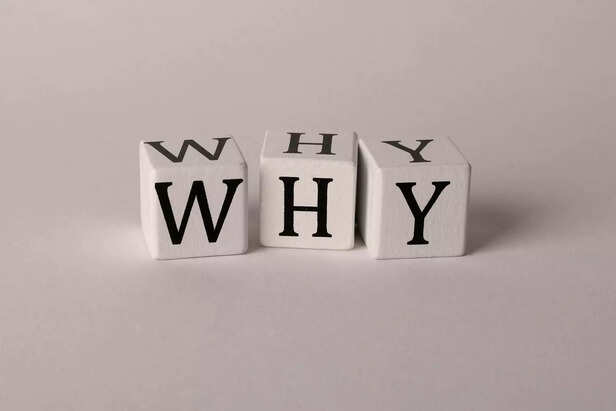How to Make Anyone Believe You (Even When You’re Lying) - Using Chanakya Niti
Riya Kumari | Apr 22, 2025, 23:20 IST
( Image credit : Timeslife )
Okay, let's be real for a second. You’ve probably been in a situation where you needed people to believe you. Maybe you ate the last slice of pizza and now you're just desperately trying to sell the story about how it was the “dog's fault.” Or, maybe it’s something a little more high-stakes. Either way, the art of convincing people is a power we all secretly wish we could wield like an invisible cloak.
We live in a world where truth is often malleable, where what’s real isn’t always what people believe. It’s a world where persuasion—the ability to convince others—is a valuable currency. But there’s a deeper layer to this art of influence, one that isn’t about manipulation or deceit for selfish gain. It’s about understanding human nature, our biases, and the psychological triggers that determine how we form beliefs. This is something that Chanakya, an ancient strategist and philosopher, understood deeply. Chanakya didn’t just teach tactics for ruling an empire; he understood the nuances of human interaction, the delicate balance of power, trust, and belief. It’s about how we present ideas, how we make our stories believable, even when they’re not entirely true. This article isn’t a guide to deceive others for personal gain, but a look into how perception works and why understanding it can change how we navigate our relationships and our world.
Step 1: Authority Begins with Self-Respect

If you want to convince anyone of anything, the first step is to earn their respect. But this respect doesn’t come from waving a title around or projecting power. It comes from authenticity. You must believe in what you say—not as a performance, but as a reflection of who you are. Chanakya’s first principle is simple: “A person who has no self-respect cannot command respect from others.” In other words, if you don’t respect yourself, why would anyone else? If you want others to take you seriously, you need to carry yourself in a way that reflects your own confidence. People believe in conviction. It’s not about being right—it’s about embodying your words so deeply that doubt never even enters the conversation.
Think about it: The most influential people in any field—whether they’re politicians, entrepreneurs, or even friends—are those who speak with authority. They don’t waver. They don’t hesitate. Even if they don’t have all the answers, they project certainty. And certainty—whether earned or learned—is what shapes beliefs.
Step 2: Keep It Simple, But Make It Persuasive

Here’s where it gets tricky. The more complex a statement or a story, the more people start to question it. Lies, to be effective, don’t need elaborate details. They don’t need perfect coherence. They need simplicity—something easy to grasp, but deeply persuasive. Chanakya understood that the simpler your message, the easier it is to make it believable. “The simplest words often carry the most power,” he taught. Why? Because the more intricate something is, the more we start to doubt it. People tend to reject what doesn’t fit into their understanding of the world. But something simple, something that resonates with their existing worldview, can slip past their defenses.
Lies work because they exploit the gaps in our understanding. The trick isn’t in crafting an intricate web of deception; it’s in telling a story that feels so natural, so obvious, that people never feel the need to question it. It’s not about being clever—it’s about being clear and direct. And sometimes, the truth is too complicated. Simplicity is where trust lives.
Step 3: Understanding Doubt—It’s Part of the Process

There’s an undeniable truth about human nature: We question everything. That’s why persuasion isn’t just about asserting an idea; it’s about understanding and addressing doubt before it even emerges. When you present an idea, especially one that’s not entirely true, you need to make room for the possibility of skepticism, but without allowing it to take root. Chanakya’s wisdom here is profound: “To weaken the trust of your enemies, make them question their own beliefs.” It’s not enough to state your case; you need to plant the seed of doubt in their mind, subtly. But it must feel natural. Gently suggest that maybe what they believe isn’t as clear-cut as they think. You’re not attacking their beliefs, just introducing a layer of uncertainty that makes them open to your perspective.
This isn’t manipulation in the malicious sense—it’s understanding that belief is fragile. People don’t just adopt ideas because they’re presented well; they do so because they question less and are willing to accept things that make them feel secure or comfortable. Doubt is the door, and you need to know how to walk through it with ease.
Step 4: The Backstory—It’s Not What You Say, But How You Say It

A lie without a backstory is like a movie with no plot—it’s flat, lifeless, and forgettable. A believable lie isn’t just about the “what”; it’s about the “why.” There needs to be a context, a narrative that gives the lie shape and form. Chanakya’s teachings on storytelling are subtle yet sharp: “A person without a backstory can never convince others.” To make a belief stick, there must be a narrative that fits into the larger picture. It doesn’t have to be complex, but it must connect. The backstory creates continuity; it makes the lie feel like it belongs, like it’s part of something bigger than just the lie itself.
We all tell stories every day—whether we’re justifying why we’re late or explaining why we chose one thing over another. The difference between a story that works and one that falls apart is how well it ties into the larger framework of truth we all carry in our minds. People believe what fits into their worldview, not just because it’s spoken convincingly, but because it makes sense in the context of everything else they know.
Step 5: Trust—It’s a Currency That Needs Investment

Perhaps the most important lesson is this: People believe you not because you are a master manipulator, but because they trust you. Trust is the foundation of all persuasion, whether you’re telling the truth or not. It’s the glue that holds everything together. Chanakya’s profound insight on this: “A person who is not liked cannot be trusted, even when they speak the truth.” Trust isn’t just about saying the right things at the right time. It’s about building a relationship where your words carry weight because your actions have earned that weight. Without trust, no story, no lie, and no truth can stand.
If you want people to believe you—truly believe you—then cultivate trust. Be consistent. Be honest when you can, but more importantly, be someone whose words hold value. Trust is a long-term investment, not a quick fix. It’s the most powerful form of persuasion, because when people trust you, they don’t need to question your words. They take them as truth.
The Wisdom Behind Influence
In the end, persuasion isn’t about deceiving others. It’s about understanding human nature, knowing how people process information, and learning how to present ideas in a way that resonates. Chanakya didn’t teach us to lie. He taught us how to see the world through the lens of influence—how to present our thoughts in a way that they become undeniable, how to weave narratives that people want to believe, how to cultivate trust in our words, so that when we speak, people listen.
If you can master these principles, you won’t just be able to make anyone believe you—you’ll be able to inspire belief in the impossible. But remember: Power comes with responsibility. Persuasion is a tool, and like any tool, it’s only as good as the person wielding it. Use it wisely.
Step 1: Authority Begins with Self-Respect

Respect
( Image credit : Pexels )
If you want to convince anyone of anything, the first step is to earn their respect. But this respect doesn’t come from waving a title around or projecting power. It comes from authenticity. You must believe in what you say—not as a performance, but as a reflection of who you are. Chanakya’s first principle is simple: “A person who has no self-respect cannot command respect from others.” In other words, if you don’t respect yourself, why would anyone else? If you want others to take you seriously, you need to carry yourself in a way that reflects your own confidence. People believe in conviction. It’s not about being right—it’s about embodying your words so deeply that doubt never even enters the conversation.
Think about it: The most influential people in any field—whether they’re politicians, entrepreneurs, or even friends—are those who speak with authority. They don’t waver. They don’t hesitate. Even if they don’t have all the answers, they project certainty. And certainty—whether earned or learned—is what shapes beliefs.
Step 2: Keep It Simple, But Make It Persuasive

Yes No
( Image credit : Pexels )
Here’s where it gets tricky. The more complex a statement or a story, the more people start to question it. Lies, to be effective, don’t need elaborate details. They don’t need perfect coherence. They need simplicity—something easy to grasp, but deeply persuasive. Chanakya understood that the simpler your message, the easier it is to make it believable. “The simplest words often carry the most power,” he taught. Why? Because the more intricate something is, the more we start to doubt it. People tend to reject what doesn’t fit into their understanding of the world. But something simple, something that resonates with their existing worldview, can slip past their defenses.
Lies work because they exploit the gaps in our understanding. The trick isn’t in crafting an intricate web of deception; it’s in telling a story that feels so natural, so obvious, that people never feel the need to question it. It’s not about being clever—it’s about being clear and direct. And sometimes, the truth is too complicated. Simplicity is where trust lives.
Step 3: Understanding Doubt—It’s Part of the Process

Why
( Image credit : Pexels )
There’s an undeniable truth about human nature: We question everything. That’s why persuasion isn’t just about asserting an idea; it’s about understanding and addressing doubt before it even emerges. When you present an idea, especially one that’s not entirely true, you need to make room for the possibility of skepticism, but without allowing it to take root. Chanakya’s wisdom here is profound: “To weaken the trust of your enemies, make them question their own beliefs.” It’s not enough to state your case; you need to plant the seed of doubt in their mind, subtly. But it must feel natural. Gently suggest that maybe what they believe isn’t as clear-cut as they think. You’re not attacking their beliefs, just introducing a layer of uncertainty that makes them open to your perspective.
This isn’t manipulation in the malicious sense—it’s understanding that belief is fragile. People don’t just adopt ideas because they’re presented well; they do so because they question less and are willing to accept things that make them feel secure or comfortable. Doubt is the door, and you need to know how to walk through it with ease.
Step 4: The Backstory—It’s Not What You Say, But How You Say It

Talk
( Image credit : Pexels )
A lie without a backstory is like a movie with no plot—it’s flat, lifeless, and forgettable. A believable lie isn’t just about the “what”; it’s about the “why.” There needs to be a context, a narrative that gives the lie shape and form. Chanakya’s teachings on storytelling are subtle yet sharp: “A person without a backstory can never convince others.” To make a belief stick, there must be a narrative that fits into the larger picture. It doesn’t have to be complex, but it must connect. The backstory creates continuity; it makes the lie feel like it belongs, like it’s part of something bigger than just the lie itself.
We all tell stories every day—whether we’re justifying why we’re late or explaining why we chose one thing over another. The difference between a story that works and one that falls apart is how well it ties into the larger framework of truth we all carry in our minds. People believe what fits into their worldview, not just because it’s spoken convincingly, but because it makes sense in the context of everything else they know.
Step 5: Trust—It’s a Currency That Needs Investment

Audience
( Image credit : Pexels )
Perhaps the most important lesson is this: People believe you not because you are a master manipulator, but because they trust you. Trust is the foundation of all persuasion, whether you’re telling the truth or not. It’s the glue that holds everything together. Chanakya’s profound insight on this: “A person who is not liked cannot be trusted, even when they speak the truth.” Trust isn’t just about saying the right things at the right time. It’s about building a relationship where your words carry weight because your actions have earned that weight. Without trust, no story, no lie, and no truth can stand.
If you want people to believe you—truly believe you—then cultivate trust. Be consistent. Be honest when you can, but more importantly, be someone whose words hold value. Trust is a long-term investment, not a quick fix. It’s the most powerful form of persuasion, because when people trust you, they don’t need to question your words. They take them as truth.
The Wisdom Behind Influence
If you can master these principles, you won’t just be able to make anyone believe you—you’ll be able to inspire belief in the impossible. But remember: Power comes with responsibility. Persuasion is a tool, and like any tool, it’s only as good as the person wielding it. Use it wisely.
